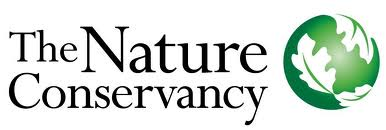
|
The Charity that Defied Expectations -- on a Budget!
|
|
Posted by Guest Blogger at Jan 10, 2013 07:01 AM CST
|
This article was written by guest blogger Brock Warner. Brock is a fundraiser for War Child Canada & US, as well as a TEDx speaker on philanthropy, a blogger, and volunteer with the AFP Greater Toronto Area chapter.
 If you’re a regular follower of this blog, you’ll know that we’ve taken a close look at a chapter of The Nature Conservancy before. The Connecticut chapter has had their time in the spotlight, and now we shift our focus to the Illinois chapter.
If you’re a regular follower of this blog, you’ll know that we’ve taken a close look at a chapter of The Nature Conservancy before. The Connecticut chapter has had their time in the spotlight, and now we shift our focus to the Illinois chapter.
The Nature Conservancy in Illinois has been protecting over 80,000 acres of important lands and waters for more than 50 years. An impressive feat for any environmental organization. Despite having accomplished so much for the region, low brand recognition is still a challenge for the organization trying to stand out in a crowded charitable marketplace.
When the chapter prepared to launch its Design for a Living World (DFLW) art exhibit and gala this past year – featuring a commissioned piece by Christien Meindertsma using Illinois’ native prairie grass to bring together art and nature in a beautiful way – the staff knew a well-planned integrated, multi-channel marketing approach was the ticket to success.
The team also understood that the audience for this exhibit and gala would be a tech-savvy crowd that needed to be reached with the latest in marketing and advertising. Those channels included:
- A DFLW microsite (in English and Spanish)
- A mobile DFLW microsite with custom QR code
- In-depth audience research and analytics
- Chic print materials
- Earned media exposure
- Targeted online display ads (in English and Spanish)
- Mobile compatibility
- Social network reach
- In-city displays
Just as impressively, the chapter team set out without agency support, and were targeting an audience composed largely of residents of Chicago where the chapter does not have a physical presence to serve as a reminder of their work.
If you can’t tell by now – there wasn’t much working in their favour.
Nonetheless, this resourceful team pushed ahead. First, the group secured the location of Lurie Garden in Chicago’s prominent Millennium Park to highlight a 72-photo display by one of the DFLW artists. The exhibit also displayed a custom QR code that directed to the DFLW mobile website while capturing mobile numbers so that event updates and reminders could be sent via SMS. Ultimately, this pop-up exhibit set the stage for DFLW in Chicago and acted as a teaser for all of the other marketing components about to roll out.
So, how did the team’s efforts pay off?
- DFLW at The Field Museum drew an estimated 68,000 visitors.
- The photo exhibit drew more than 700,000 visitors.
- The DFLW website had 1,000 visitors per month (more than double the number of visitors to any single page in previous years).
- Print and online media had 5,220,093 impressions.
- Broadcast coverage was earned on WTTW (PBS), WGN, WMAQ, LX-TV and other broadcast television and radio outlets measuring millions of impressions.
- Advertising on the WMAQ website yielded 1,811,399 impressions.
- Other online ads yielded nearly 480,000 impressions.
- Print advertising yielded nearly 200,000 impressions. The signature fundraising gala event raised $240,000!
When I hear about any organization achieving results like this without agency support or strong brand recognition, it is proof in practice that strategic integrated marketing for nonprofits of any size can be an effective tool for engaging new audiences, and raising more money.


















